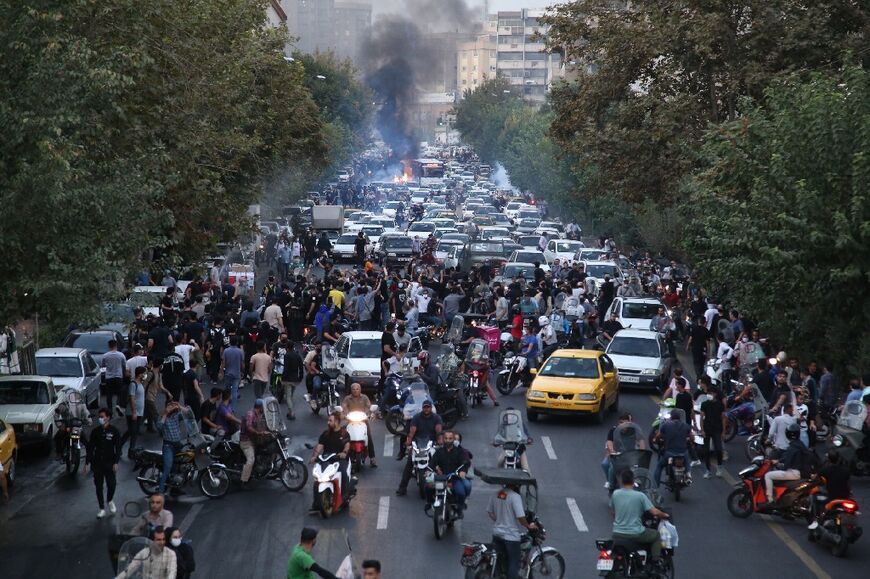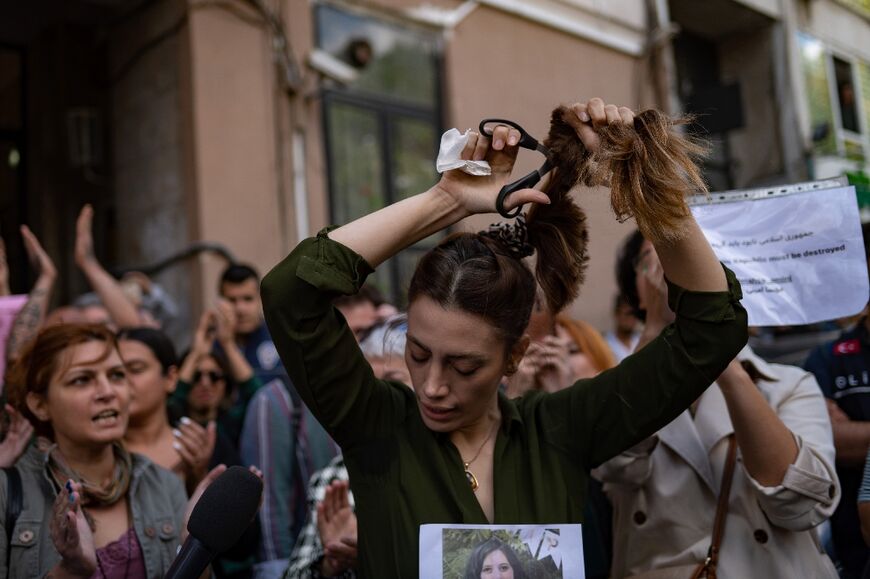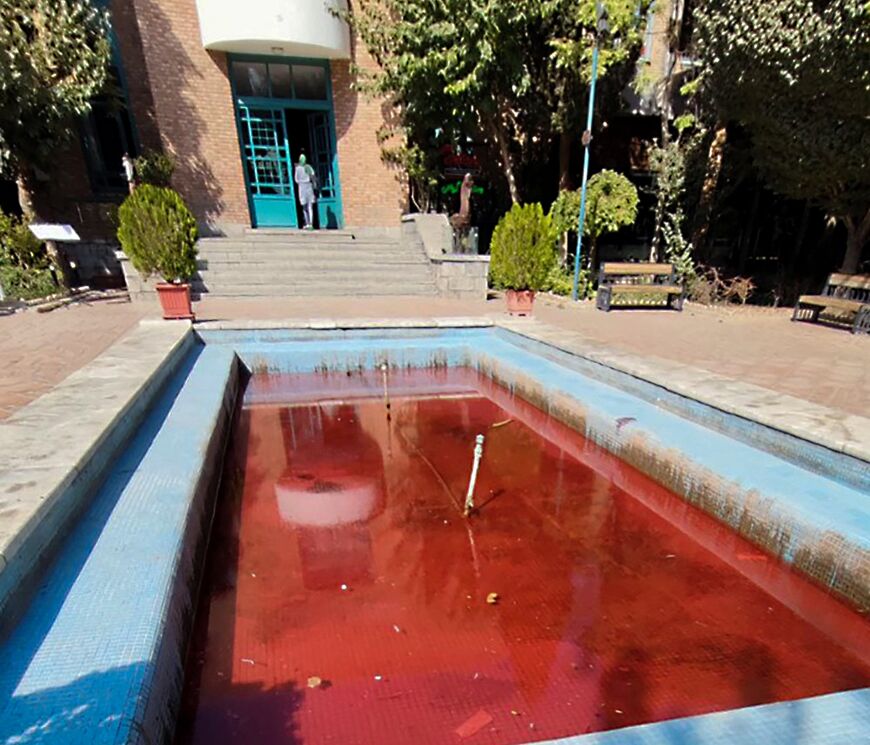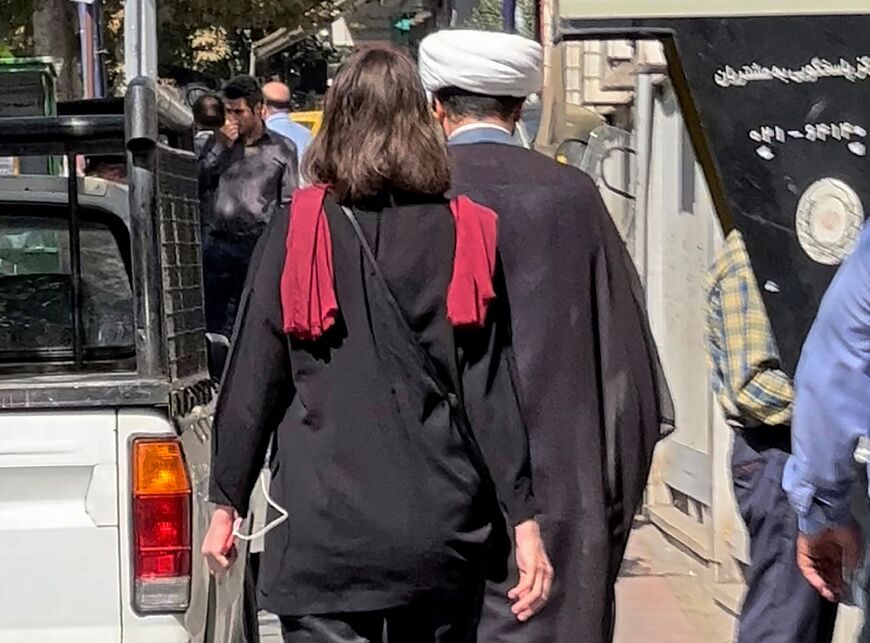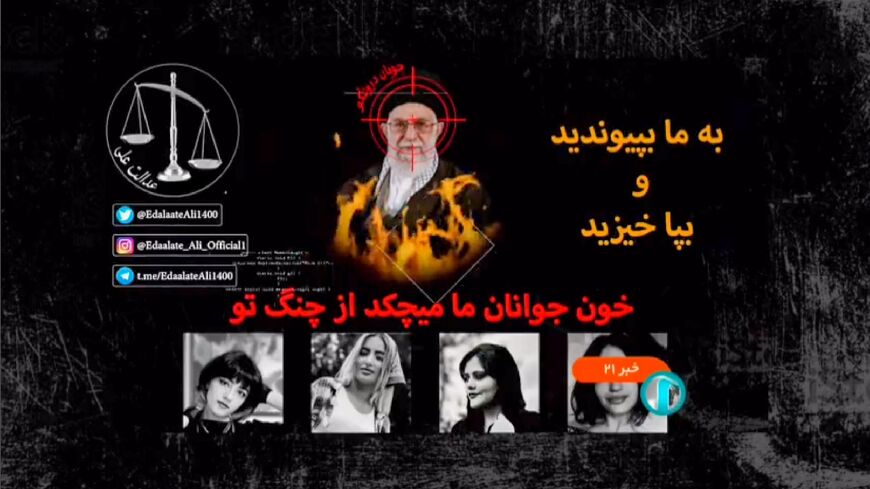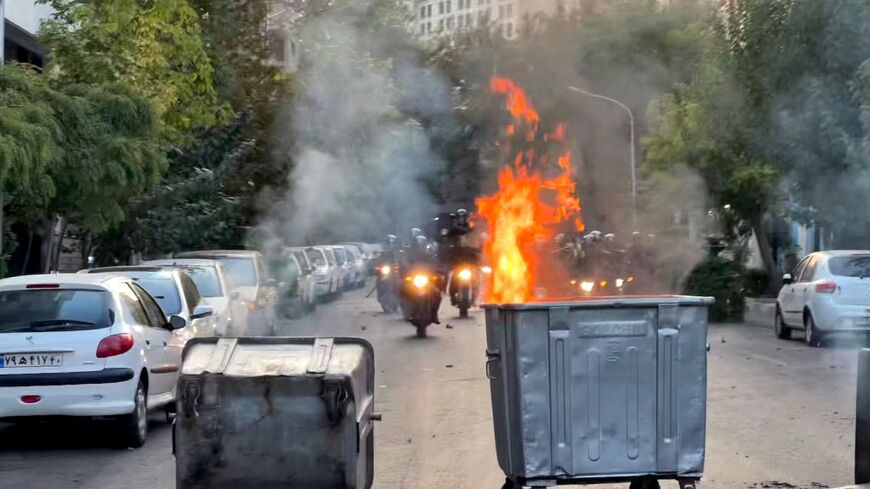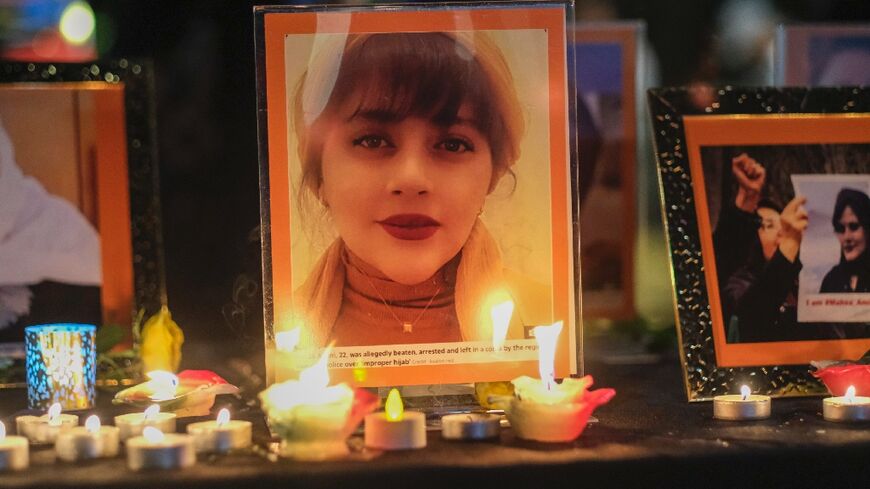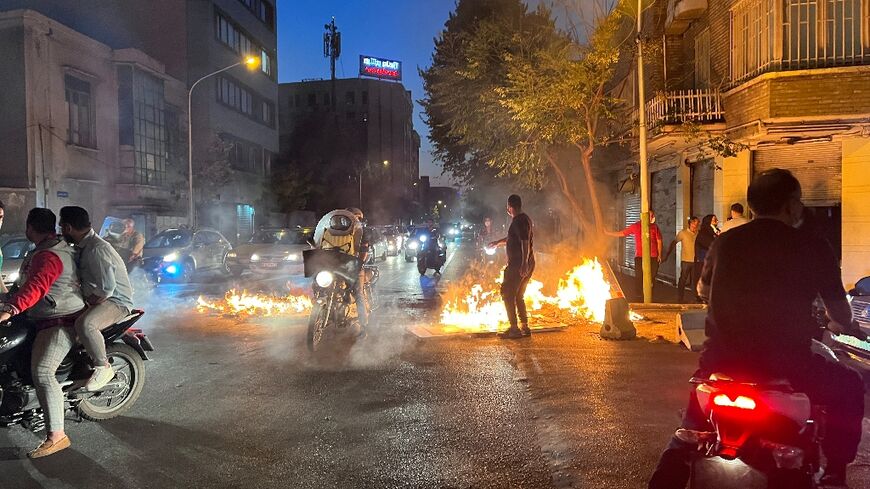The bold tactics that have kept Iran protests going

Flashmob-style protests, images beamed onto tower blocks, water fountains dyed blood-red: young Iranians armed with little more than their phones have adopted a slew of tactics to give demonstrations over Mahsa Amini's death staying power.
The protest movement is showing it can go the distance more than one month after it sprung up, in spite of a crackdown by the security forces that has cost at least 122 lives.
The protests erupted in response to the death of Amini, 22, after her arrest by the morality police in Tehran for allegedly violating the Islamic republic's strict dress code.
Women have led the charge, discarding and burning their headscarves, marching and chanting "Woman, life, freedom", actions copied around the world.
Despite internet curbs cutting access to popular apps like Instagram and WhatsApp, savvy youngsters have still managed to get out videos of their protests.
In a game of cat and mouse, drivers have honked horns in support of the protesters and blocked roads with cars to slow the security forces, footage has shown.
Streets have also been obstructed by toppled and burning dumpster bins, and in some cases overturned police cars.
The security forces have responded by taking to motorbikes to cut through traffic, and have been seen tearing off number plates to identify the drivers for arrest later.
Officers riding pillion are often seen firing on demonstrators with birdshot, teargas, or even paintballs to mark and eventually track them down.
- 'Disarming the repression machinery' -
Youths have in turn taken to wearing masks, switching their phones to "airplane mode" to avoid being located and packing extra clothes to replace those splattered with paint.
In a video shared on social media, protesters dismantled a surveillance camera high above a road in Sanandaj, a city in Amini's home province of Kurdistan.
Protesters have been seen staging more numerous but smaller, pop-up gatherings away from city squares typical for demonstrations.
"Compared to previous protests this new round is more decentralised, without a particular leadership and organisation and a particular demand like a policy change," said Omid Memarian, senior Iran analyst at Democracy for the Arab World Now (DAWN).
"Instead this has been all about 'Death to the dictator' and that the Islamic republic should go. This is a major departure.
"It has disarmed the repression machinery that is trained to crack down on mass protests, student protests and the like," he told AFP.
Women have been filmed cutting their own hair at protests, a symbol of sorrow turned into a show of resistance with roots in Persian folklore.
Those too intimidated to take to the streets have found other, more discreet ways of contributing to the cause.
One form of protest emerged two weeks ago, with fountains in Tehran appearing to be filled with blood after an artist turned their waters red to reflect the lethal crackdown.
In the same vein, art students at a Tehran university shot a video showing their hands raised in the air and covered in red paint.
On the same day, activists from the Edalat-e Ali group hacked a state television live news broadcast, superimposing crosshairs and flames over an image of supreme leader Ayatollah Ali Khamenei.
Images shared online this week showed an effigy of a cleric hanging from a Tehran highway overpass.
In a video taken one night, Amini's face was projected onto the side of a residential tower block in Ekbatan Town, in Tehran, as protesters chanted slogans from the safety of windows or rooftops.
And in a video that appeared Wednesday, two bare-headed women standing in front of a sign that reads "Hugs for those who are sorrowful" are seen embracing passersby on a street in Ekbatan.
- 'Unstable equilibrium' -
Schoolgirls have even taken up the baton, turning their backs to the camera and removing their hijabs before raising their middle fingers at classroom portraits of Khamenei.
Independent researcher Mark Pyruz said his analysis of visual evidence on social media showed the highpoint of the protests was September 21, and that turnout decreased this month.
But "while experiencing peaks and troughs, there remains a level of sustainability not seen in previous protest periods," such as 2019 demonstrations sparked by a shock fuel price hike, he told AFP.
Henry Rome, an Iran specialist at the Washington Institute, said he expects the protests to carry on for some time.
"The more organised and coordinated they become, the greater the chance they can broaden their base of support and present a clear, near-term challenge to the system," he told AFP.
"But the state's security apparatus excels at disrupting precisely that type of organised opposition, with a well-honed toolkit of violence, arrests, internet disruptions and intimidation.
"So, for the time being, the state and the protesters are in an unstable equilibrium, with neither able to overcome the challenge posed by the other, which suggests that these current protests and violence could persist for an extended period."


